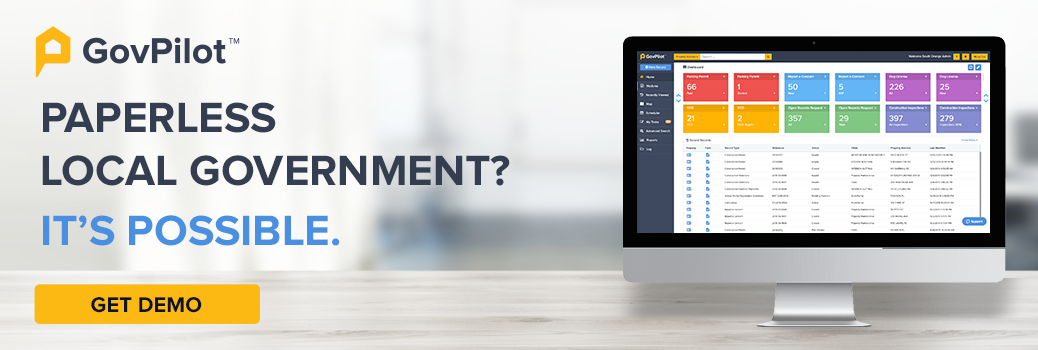Local government officials will often face uphill battles when it comes to getting constituents engaged with their websites. It's not just about providing valuable information; it is also about making sure that information is accessible and interesting enough to draw people in. Sometimes, the technical aspects alone, like optimizing for search engines or ensuring mobile compatibility, can be a lot to handle.
And even when everything technically works, there's the ongoing challenge of encouraging people to visit regularly and participate actively in civic life online.
Additionally, there's often the issue of reaching diverse social groups who may have varying levels of digital literacy or access to technology. Balancing the need for transparency with the complexity of government processes adds another layer of difficulty. Officials often find themselves not only managing the day-to-day operations of their offices but also constantly thinking about how to improve digital engagement strategies to better serve their communities.
The struggle is not only technical or logistical, it is inherently about building bridges between different groups in the new digital age. Read on to learn how every click and interaction can potentially deepen civic engagement and strengthen the democratic process at the local level.
Table Of Contents: What To Expect
- Importance Of A Government Website
- Website Design Tips
- What Should Be On Your Government Website Checklist
Why Is A Government Website Important?
A government website plays a crucial role: it does more than just give your locality an online presence, it is a critical tool for promoting democracy, enhancing governance efficiency, fostering public trust, and empowering citizens to participate in shaping their communities.
It is the gateway between the administration and its constituents. Here are a few of the pivotal needs for government websites:
- Accessibility and Transparency: A government website provides a centralized platform for citizens to access essential information about government services, policies, regulations, and decisions. This transparency forsters trust and accountability within your community.
- Efficiency and Convenience: By offering online services such as license applications, permit renewals, and payment options, government websites can help to streamline bureaucratic processes, saving time and effort for both officials and citizens.
- Hub of Communication: A fluid government website can serve as the primary channel for disseminating critical updates, emergency alerts, and community announcements. This can help to ensure timely and reliable communication during crises or routine governance.
- Cost- Effectiveness: Digital platforms often reduce administrative costs associated with traditional methods of communication and service delivery, making government operations more efficient and budget friendly.
Read GovPilot’s ADA Website Compliance Checklist to learn more about building your government website up to code!
The Basics of Designing Your Government Website
Designing a government website involves several key principles and considerations to ensure that it properly serves its purpose of providing information and facilitating engagement. Here are some important basics to keep in mind:
1. Implement User-Friendly Design
A smooth and clean user interface is a necessity when building any website, especially a government one. It is important to focus on the needs and preferences of your constituents. Look to conduct research to understand your users, keying in on demographics, behaviors, and expectations. Design the website with intuitive navigation, clear labeling, and easy to find information.
Read our guide on How To Run an Ethical and Equitable Community!
2. Clear Information Architecture
Organize content logically and hierarchically. Use categories, subcategories, and menus to help users find information quickly. Also consider employing a search function for easy access to specific topics.
Read our resource regarding Local Government Community Engagement Strategies here!
3. Accessibility
The most important factor in a government website is its ability to be accessible to all of those who use it. Most communities are filled with diverse groups, spanning across different ages and education levels, and technology literacy may not be equal throughout all communities. With that said, it is key to have a website that is accessible and easily useful for all.
By following the basics of website design, government agencies can create an inclusive, user friendly platform that works to further enhance transparency, promote civic engagement, and effectively serves
Read on about Disability Inclusion Planning in Government with our resource.
A Deeper Understanding: What Pages Should Be Available On Your Government Website
A well designed local government website serves as a crucial hub of information and services for the community. Here is a list of the necessary pages that should be available on your website:
-
Vital Local Information
Each constituent of a community should have access to important information right at their fingertips. It is the job of local government officials to provide this, and your government website is the perfect place to do so.
Prominently featured should be details about government services and departments, offering direct navigation to sections like public services, parks and recreation, public safety, and other social services. Contact information for key members of these groups should also be easily reached so that residents can quickly connect and feel that they are being better served.
You can even look to include regular news updates, on upcoming events, public meetings, and other important announcements to keep your community better engaged.
Consider how to Create Content For Your Local Government Website!
-
Safety Guides and Resources
Constituent safety should always be the paramount goal for any local government official. Citizens should be able to always feel safe in their communities. Including safety guides and resources on your local government website is essential to ensuring the well being of your residents.
These resources serve as vital tools for educating the community about various safety measures and protocols during emergencies such as natural disasters, pandemics, or public safety incidents. Information on preparing for a disaster, evacuation plans, and who to contact in an emergency can help you as a local government official mitigate any risks brought upon the communities that you serve.
-
Community Vision and Goals
As a local government official, it is important to do the right things to move your community forward towards a more prosperous future. Incorporating a clear community vision and set of goals is crucial for many reasons. It can help foster unity, transparency, and effective governance.
By putting in plain text a clear vision, local governments and constituents can work together to set a direction that aligns with the aspirations and goals that they've set.
A commitment to the long term plan, sustainable development, and most of all a commitment to making constituents happy. This provides a foundation for collaboration and collective action, ensuring that your community evolves in a way that reflects community values.
-
A “Get Involved!” Page
Volunteerism is the lifeblood of any harmonious community. It is a fun, productive way to not only help out great causes, but to bring community members together. A “Get Involved” page can help to create a sense of ownership and responsibility among residents in the well-being of their communities.
A page like this can help to create a more collaborative approach to the upkeep of a community, where rather than local officials doing all of the leg work, constituents are given the chance to make a meaningful impact on their community.
Learn all about How to Bring Digital Democracy to Government Agencies here.
-
Help and Outreach Resources
Including help and outreach resources on a local government website is crucial for ensuring that support services are accessible to all residents no matter what background they come from. Providing help resources on your website can ensure that residents are able to easily access information about social services, welfare programs, and support networks available within your community.
Incorporating help and outreach sources shows that local governments are committed to supporting residents in times of need, which fosters a compassionate and resilient community.
Read our guide on Government Website Design Tips here!
Improve Your Local Government Website Now!
Local government officials should feel motivation to bolster their online presence and make a more robust website for their constituents to engage with. Officials and government employees should book a consultation with GovPilot to learn how our software solutions could assist you further in constituent engagement and streamlining workflows!.
Government Website FAQs
-
Why is it crucial to have a robust government website?
Citizens always look for ways to connect with and seek information directly from their government. While it is not possible for local government officials to reach out to constituents personally and answer their questions, it is beneficial for governments to tap into the capabilities of tech and engage with their constituents online.
-
What should be on my government website besides local announcements?
Your local government website should not only include local announcements, but also resources for constituents to seek aid or municipal services, ways to get involved in the community, local information and emergency procedural guides.
Read On:
- Best Public Sector Software: Ways Governments Use Technology to Save Time & Money
- Government Continuity Strategy: Procedures During a Crisis
- AI in Government in 2023 and Beyond: Bringing Artificial Intelligence to Your Municipality
- What is Azure for Government? Everything to Know
- What is Municipal Software? Understanding Government Software for Municipalities & Counties
- 7 Government Cybersecurity Best Practices: Keep Data Secure & Prevent Ransomware Attacks
- 13 Benefits of Digital Transformation for Local Government






